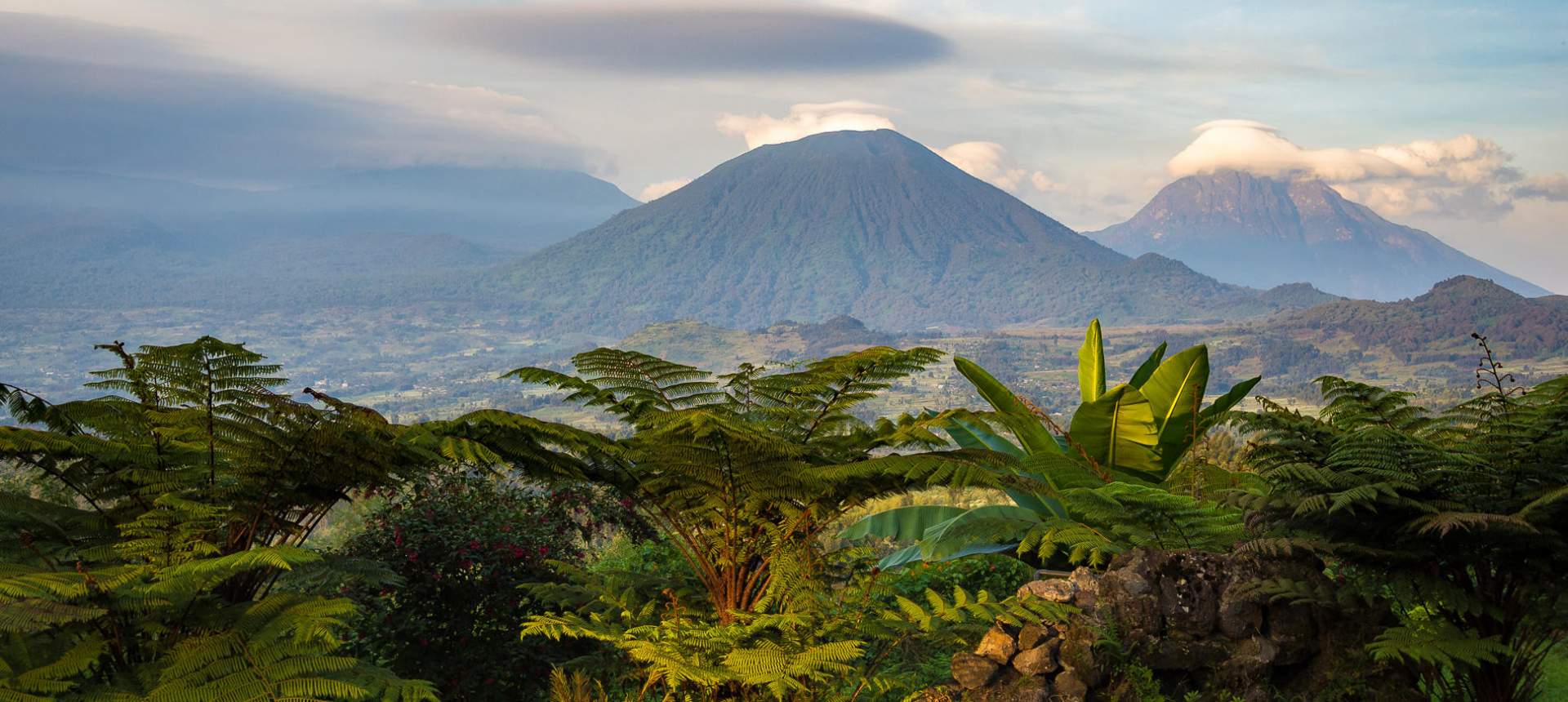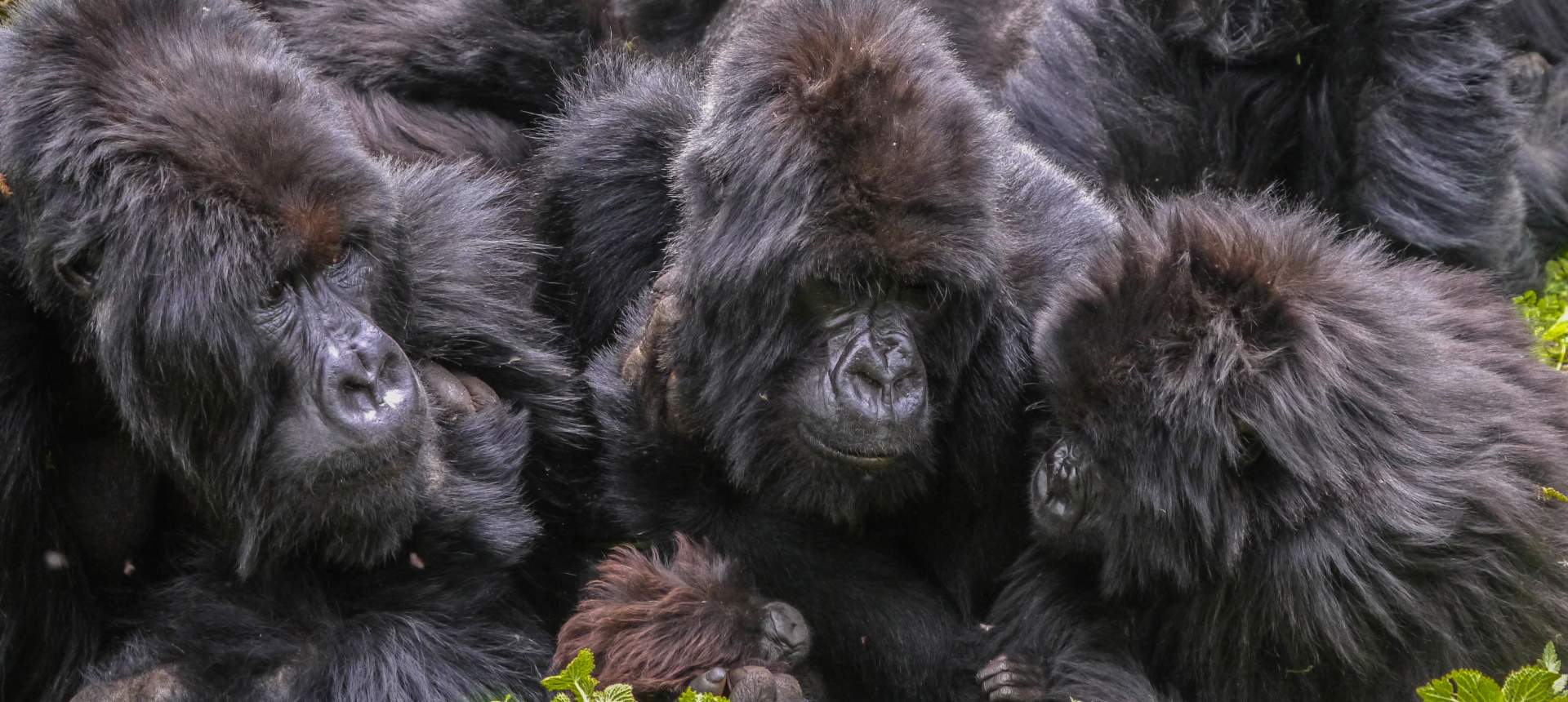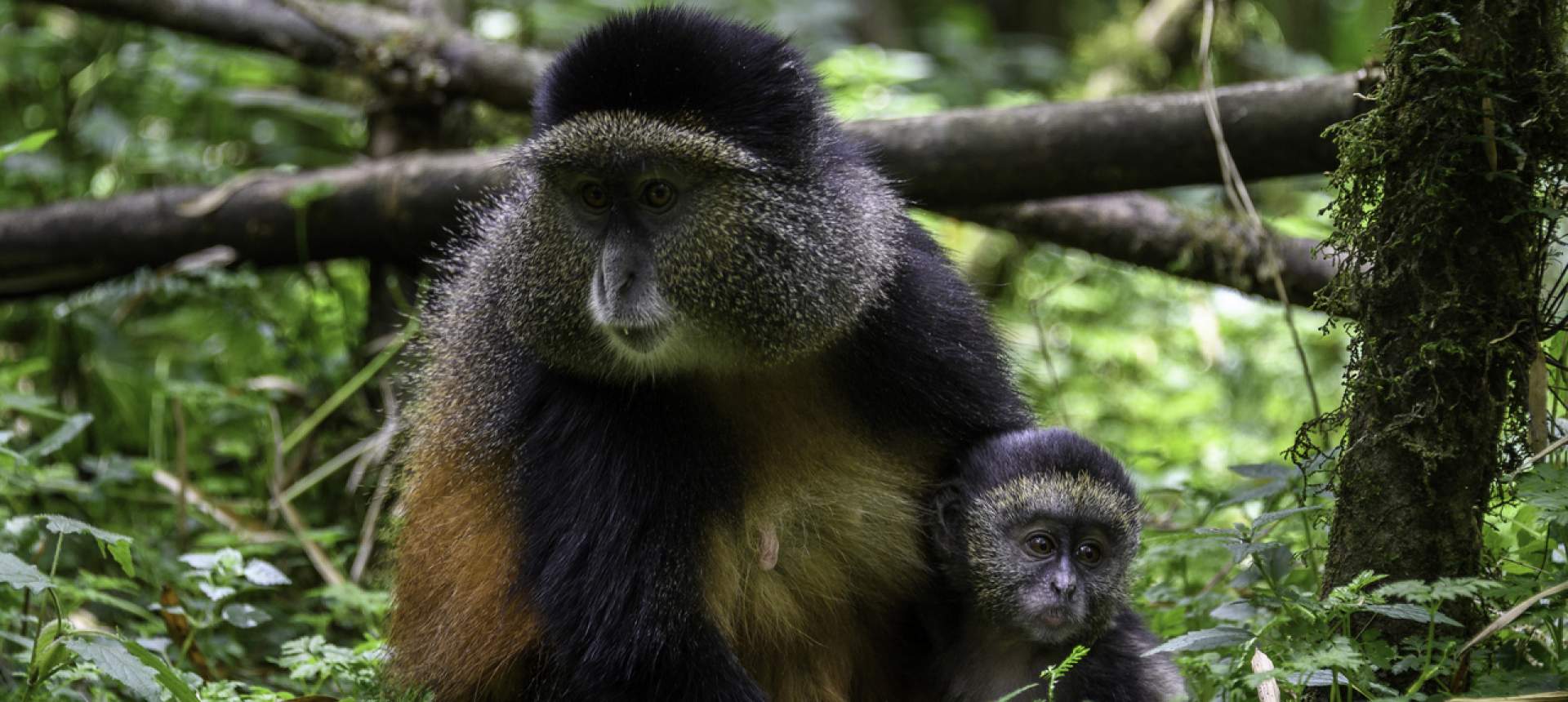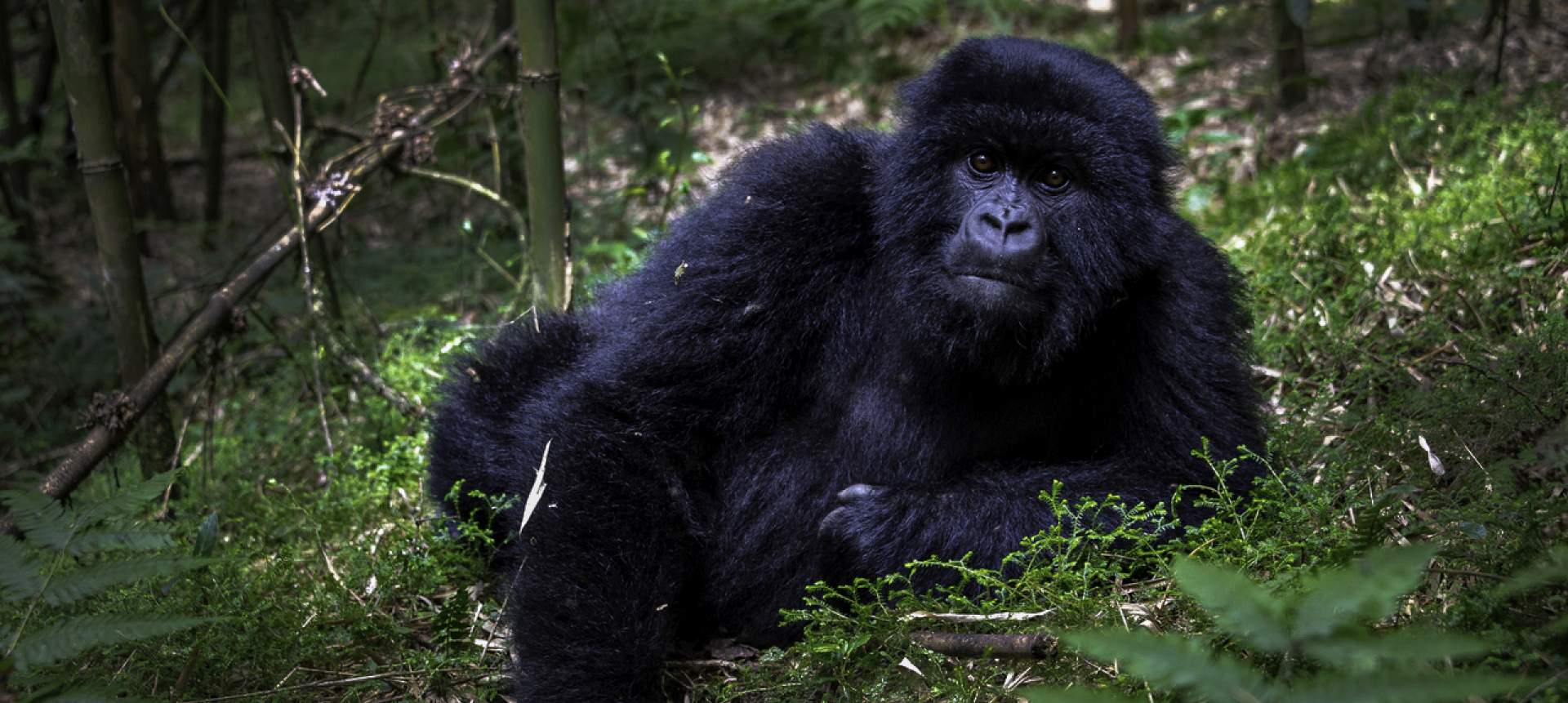RWANDA
THE LAND OF A THOUSAND HILLS
Rwanda, a tiny landlocked country in central Africa, characterized by undulating hilly and mountainous terrain and known as the “Land of a Thousand Hills.” Situated in the heart of the Albertine Rift, it is one of Africa’s most biodiverse regions, a haven of rainforest endemism with its most celebrated wild mammal being the iconic Mountain Gorilla of the Virunga massif. Tucked in between the iconic safari destinations of Kenya and Tanzania, Rwanda offers some of the best primate tracking on the planet – set against the backdrop of its endless green hills and soaring mountainsides.
Volcanoes National Park is part of the larger Virunga Massif transboundary conservation area and a World Heritage Site. It is home to some 604 mountain gorillas, amongst a host of other rainforest species. Tracking for Mountain Gorillas is one of the most unforgettable wildlife experiences, and most will say that it is one that exceeds their most extravagant expectations.
A densely-populated country with a predominantly rural population, Rwanda is known for its traumatic history in the form of the 1994 genocide, as well as for its courageous recovery to become a stable, well-run and united country.
Visits to Rwanda are as much about people as they are about nature. Friendly and vibrant, the customs and the culture of the people and communities can be experienced throughout your visit whether in the field, at their homes or in the local markets. Rwanda is experiential travel at its best, with world-class eco-hotels.
Where to stay
Virunga Mountains
WILDLIFE
Rwanda is blessed with extraordinary biodiversity, with incredible wildlife living throughout its volcanoes, montane rainforest and sweeping plains. Few experiences are as magical as tracking the mighty Mountain Gorillas in the misty rainforest of the Virungas Volcanos, a wildlife adventure unlike any other. The unique opportunity to see gorillas in their natural habitat is unforgettable, some even say life changing. Encounters with the gorillas as they go about their daily lives are carefully managed, with expert trackers and guides leading small groups up bamboo-covered slopes to spend a precious and awe-inspiring hour just a few feet away from the gentle creature.
Only six tracking permits are issued per troop per day, meaning the encounter is as intimate and as unobtrusive as possible. With only 96 permits available each day in Rwanda, it is highly recommended to book in advance. Hikes up to their various locations can last anything from 30 minutes to four or more hours, reaching an altitude of between 2,500m and 4,000m. Porters are available to carry backpacks and cameras, as well as to offer a helping hand along the route.
The Albertine Rift is one of the richest location in Africa for both mammal and bird diversity, and mammal and bird endemism. It is also one of three locations in Africa most important for primate diversity and conservation. Aside from more than a thousand plant species, an incredible 670 bird species and myriad reptiles and amphibians, Rwanda boasts some 151 mammal species, amongst which are 15 primates – including one of our closest genetic relatives and the famous subjects of Dian Fossey’s seminal research – the Mountain Gorillas. Rwanda is superb for primates in general, including the fun-loving Sykes monkey, the Golden monkey and the boisterous chimpanzee in the Nyungwe Forest.
VOLCANOS NATIONAL PARK
Situated in the far northwest corner of Rwanda, Volcanoes National Park protects the steep rainforest slopes of the magnificent Virungas mountain range. Rare mountain gorillas and golden monkeys reside on the slopes of Rwanda’s Virungas, just a three-hour drive from Kigali International Airport. The lush slopes of these volcanoes provide a dramatic natural setting for one of the most thrilling and memorable wildlife experiences – seeing the mountain gorilla in its natural habitat. Roughly half of the world’s wild population of mountain gorillas is resident on the Rwandan slopes of the Virungas.
DIAN FOSSEY
Over 50 years ago American Dian Fossey flew to Rwanda to study the country’s gravely threatened mountain gorillas. She hiked into the Virunga Mountains, pitched two tents and established the Karisoke Research Center. Fossey’s zealous work captivated the world, and she is widely credited with saving mountain gorillas from extinction. It was thought at the time that mountain gorillas might go extinct by the year 2000. But instead their population has doubled. In the region where Dian worked, they’ve gone from 240 individuals to just over 600.
Although she was murdered in 1985 under still-mysterious circumstances, her legacy persists. Fifty years later Karisoke is now the longest-running gorilla research program, operated by the nonprofit Dian Fossey Gorilla Fund International. It’s a great conservation success story, but the population is still incredibly fragile. There are another small population of about 500 individuals in Uganda, that means the that on the entire planet, there are fewer than 1 100 Mountain Gorillas remaining. They are one of the most endangered mammals on the planet.
One of the major threats for mountain gorillas in Dian Fossey’s time was poaching, primarily for souvenirs. Luckily those are not problems for the mountain gorillas anymore, the biggest risk now is that they have a very small habitat.
PHOTOGRAPHY
Being immersed within a group of mountain gorillas is one of the most wholesome wildlife photography experiences there is, a life-long dream for most wildlife and nature lovers. Between the raw beauty, charisma, and proximity with which you can photograph these amazing primates, it’s sure to be one of the most spectacular and dramatic photographic moments of your life. The gorillas are much more incredible in real life than can ever be shown with an image. The sheer size of the silverback males is astounding – they often weigh over 200kg.
The toddlers and juveniles love fooling around, dangling from branches and making funny faces. You are not allowed to approach the gorillas too closely, but that doesn’t mean a curious youngster can’t take interest and inspect you.
CLIMATE
Rwanda has a temperate tropical highland climate, and – thanks to its high elevation – lower temperatures than you would expect for an equatorial country. Kigali’s daily temperatures range from 12 °C to 27 °C, with very little variation throughout the year. The mountainous north-west, is generally cooler than the lower-lying east.
Rwanda has two rainy seasons: the first is from around February to June and the second from September through December. These are separated by two dry seasons: June to September, during which there is often no rainfall at all, and a shorter dry period from December to February. Typically, the west and North-west of Rwanda receives more rainfall annually than the South-east and east of the country.






